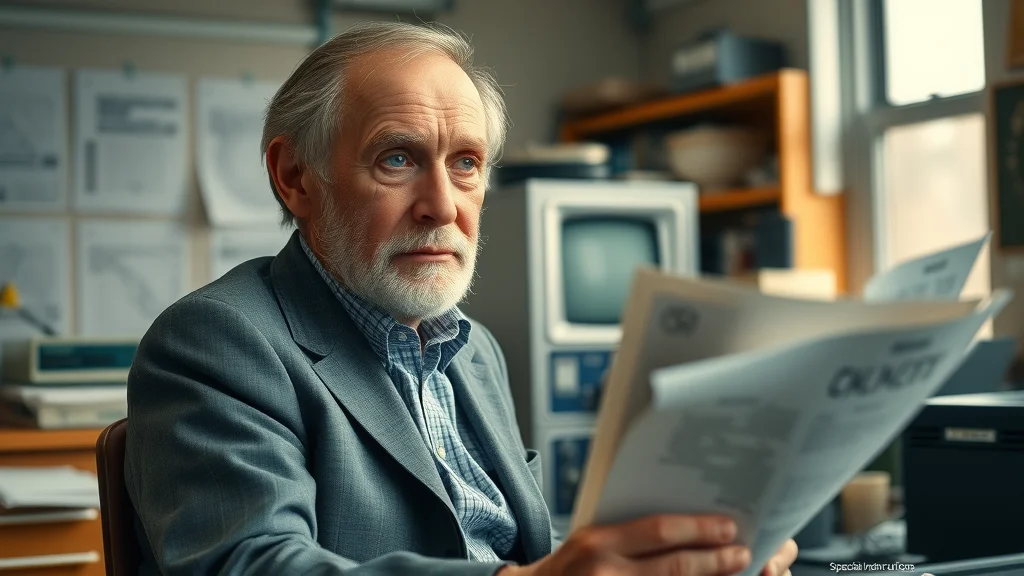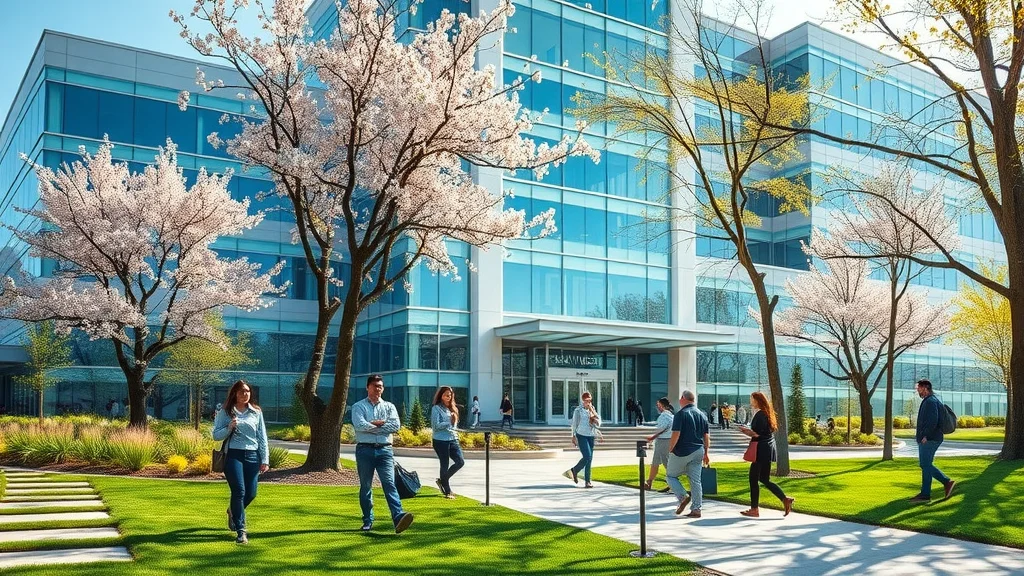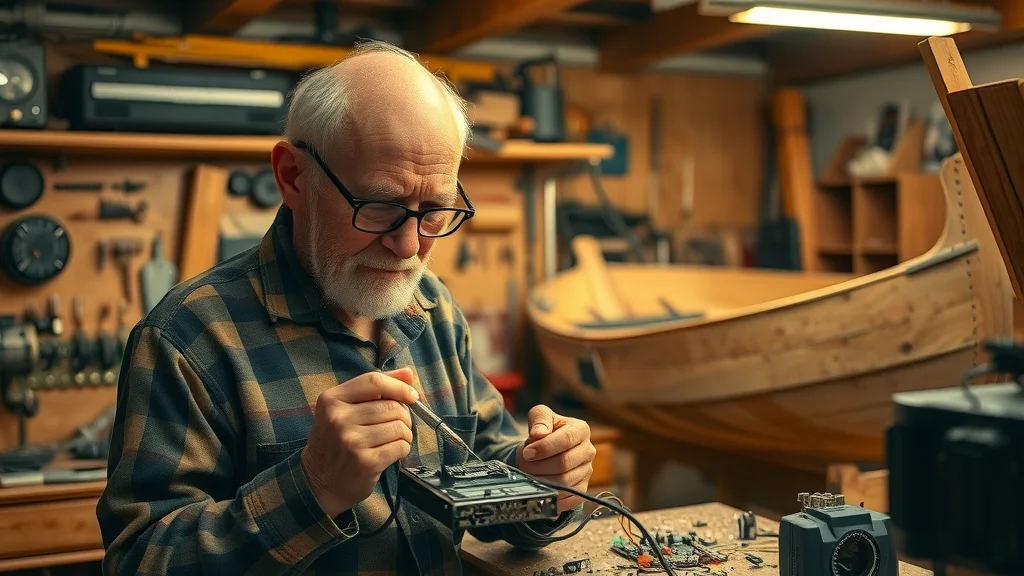Did you know that nearly every calculation performed by today’s fastest computers can trace its roots back to the small town ingenuity of a Chippewa Falls-born supercomputer engineer? As we approach the centennial of Seymour Cray’s birth, remembering Seymour Cray on his 100th birthday becomes more than just a milestone—it’s a window into the story of how one man transformed global industry and technology from a modest Wisconsin hometown. This article will unveil the legacy of the father of supercomputing, share fascinating insights from Cray’s life and career, and highlight why honoring his memory continues to inspire generations of dreamers and doers alike.
A Revolutionary Figure: Remembering Seymour Cray on His 100th Birthday
"Few individuals have transformed the world of technology as profoundly as Seymour Cray."
Seymour Cray’s journey from Chippewa Falls to becoming the father of supercomputing is nothing short of revolutionary. Remembering Seymour Cray on his 100th birthday reminds us of how one individual’s relentless curiosity and visionary thinking can ignite a global revolution in industry and technology. Cray’s breakthrough designs for the fastest computers—beginning in the 1960s and continuing for decades—set new standards in speed, efficiency, and innovation. His dedication, often spent in his workplace late into the night, not only yielded the world’s first true supercomputers, but also built a culture of excellence at Cray Research that still resonates in the computing world today.
The impact of Cray’s life is measured not only by the technological milestones his machines, like the Cray-1, achieved, but by the enduring inspiration he offers to modern engineers and dreamers. Many of the world’s fastest computers, utilized in weather prediction, scientific research, and artificial intelligence, have inherited Cray’s architecture for the system at their core. As the chippewa falls museum of industry and the wider technology community join together in continuing to honor his remarkable legacy, we see just how deep Cray’s roots go—not only across the industry but right back to his hometown.
A Startling Legacy: How Seymour Cray Changed Supercomputing Forever
The story of Seymour Cray is synonymous with the evolution of supercomputing. When Cray began his career, the concept of a computer that could process vast datasets in milliseconds was little more than science fiction. Yet, under his leadership, chippewa falls is brought to the world stage through breakthrough machines that redefined both the possible and the practical. The Cray-1, known for its donut-shaped design and astonishing processing speed, became an instant icon—not just as the fastest computer of its era, but also as a symbol of American innovation during a time of technological race.
Cray’s disruptive approach meant constantly challenging conventions: he reduced complexity where others added layers, focused on elegant solutions, and fostered a team of people who felt inspired to give their best. Supercomputer engineering became as much an art as a science under Cray’s hand, ensuring that every new model—each progressing in leaps of speed and capacity from the Cray-1 to the Cray X-MP and Y-MP—could fully support the needs of the world’s leading scientists, universities, and governments. In doing so, Cray not only advanced global computing power but also set a bar of excellence that continues to guide modern industry and technology today.

Seymour Cray: From Chippewa Falls to International Fame
Seymour Cray’s rise from the cozy, supportive environment of Chippewa Falls to the world’s elite circles of supercomputer engineers is a testament to both his genius and the unique nurturing of his small town roots. The humble beginnings of this falls born innovator shaped his practical, hands-on approach to design and research. It’s no accident that many advances we now take for granted—the extremely good efficiency of computing hardware, reliability, and even the layout of research campuses—draw inspiration from Cray’s formative years growing up in the Wisconsin countryside.
With every major accolade and patent, Cray remained deeply connected to Chippewa Falls, often referencing the tranquility and community support of his hometown as the secret to his success. The chippewa falls museum of industry and local area history centers now proudly celebrate Cray’s legacy, underscoring the deep connection between rural ingenuity and global technological leadership. By reflecting on this journey, we see how one man’s personal and professional legacy continues to inspire new generations in both Chippewa Falls and far beyond.
What You’ll Learn About Seymour Cray’s Enduring Influence
- The history and milestones of Seymour Cray's career
- Key achievements of Cray Research
- Cray’s ties to Chippewa Falls and the community’s impact on his legacy
- How Seymour Cray shaped the field of supercomputing
- Ways to honor the centennial of his birth
The Birthplace of Genius: Growing Up in Chippewa Falls

Chippewa Falls: The Early Life of Seymour Cray
Chippewa Falls, a quintessential small town in the American Midwest, served as the crucible for Seymour Cray’s creative genius. Born in 1925, Cray’s formative experiences in the chippewa area provided him with both the stability and intellectual curiosity that would characterize his later achievements. The spirit of collaboration and the value of hard work—core traits of the community—deeply influenced his philosophy toward supercomputer engineering. Local history centers and the chippewa falls museum of industry now proudly curate the memories and milestones from Cray’s youth, demonstrating how the roots of one of the world's most impactful minds are firmly set in small town soil.
It was in Chippewa Falls where Cray’s interest in electronics first blossomed, sparked by experiments with radios and self-built gadgets that amazed neighbors and family alike. This sense of playfulness, combined with a keen talent for mathematics and science, equipped him to see challenges not as obstacles but as puzzles waiting to be solved—a mindset that would later enable his record-breaking work in supercomputing. The area history center records are filled with anecdotes about Cray’s ingenuity, reflecting a legacy that still fuels local pride today.
Educational Foundations: Cray’s Academic Journey
Cray’s education journey led him from the local Chippewa Falls high school to the halls of the University of Minnesota, where he would cultivate the technical skills and visionary mindset that the supercomputing world would later celebrate. At university, Cray excelled in electrical engineering and mathematics, subjects where his curiosity for how things worked drove him to outpace his peers. University professors frequently recalled his laser-focused demeanor and willingness to inject creativity into even the most technical projects, a foreshadowing of the innovative path he would carve for himself.
After completing his degree, Cray returned to his humble beginnings in Chippewa Falls, choosing community and continuity over the allure of larger cities. This choice to keep close ties to his roots speaks volumes about his values and explains why his career, as much as his inventions, became an inspiration to small town innovators everywhere. The falls museum and local history center today display Cray’s early blueprints and school projects, further cementing his role as a role model whose path from education to invention was uniquely his own.
Cray Research and the Rise of Supercomputing
Seymour Cray and the Founding of Cray Research
In 1972, after leaving Control Data Corporation, Seymour Cray founded Cray Research in the heart of Chippewa Falls. This move not only set a new direction in supercomputer engineering but also became a defining chapter in industry and technology. Under Cray’s laser-focused guidance, Cray Research revolutionized what computers could achieve. His commitment to assembling a highly skilled team of people, drawn both from Chippewa Falls and across the nation, fostered an environment where innovation became the company’s hallmark.
Cray Research quickly gained a reputation as both an extremely good place to work and the home of the fastest computers in the world. The legendary Cray-1 was hailed as the biggest eye opener in computing, ushering in an era of compact, elegant supercomputers that defied the bulk and complexity of earlier designs. This organizational spirit, structured by the vision of the father of supercomputing, pushed boundaries and attracted top-tier talent to Chippewa Falls, transforming a small town into a hub of global technological ambition.
Chippewa Falls: Cray Research Headquarters and the Community Connection

Cray Research was more than a place of work; it was a community landmark. Situated within the chippewa area, the Cray Research campus drew engineers and visionaries from across the globe to small town Wisconsin. Local businesses thrived, new families settled, and the culture of innovation spread beyond the research labs and into the very fabric of Chippewa Falls. The site became known as the headquarters of global supercomputing prowess, as the latest Cray machines pushed the boundaries of possibility.
The partnership between the company and the community was deeply reciprocal. Many charitable events, science fairs, and educational initiatives found their origins in this collaboration, with Cray and his team actively mentoring students and sponsoring technological advances. Today, the chippewa falls museum of industry and area history center both highlight Cray Research’s continuing influence on local life, emphasizing how a world-class company can thrive, not in isolation, but as part of a close-knit small town ecosystem.
Technological Milestones: The Cray-1 and Beyond
- Key supercomputer models: Cray-1, Cray X-MP, Cray Y-MP, Cray-2
- Trailblazing innovations: High-speed vector processing, unique modular design, innovative cooling systems, and architectural simplicity
- Legacies: Foundations for today’s fastest computers, benchmarks for reliability and efficiency in global industry and technology
Through trailblazing innovations like the Cray-1, Cray X-MP, and Cray-2, Cray Research solidified its reputation as the gold standard for supercomputer engineering. These designs were more than just fast—they embodied Cray’s distinct approach of making the complex elegantly simple, and the extraordinary eminently practical. As the company grew, so too did its influence on the global tech scene, with echoes of Cray’s work found in every corner of modern computing.
Seymour Cray’s Leadership Style and Vision
"The trouble with programmers is that you can never tell what a programmer is doing until it’s too late." – Seymour Cray
Innovation Fueled by Curiosity: Cray’s Unique Approach

Cray’s leadership style was defined by relentless curiosity and a refusal to accept limitations. He encouraged those around him to challenge established conventions, never fearing failure as long as it brought them closer to new solutions. His work and dedication inspired those on his team, and many recall late-night brainstorming sessions that led to breakthroughs, both big and small. His hands-on mentorship style—unique in its accessibility—was instrumental in shaping Cray Research into an extremely good place for nurturing innovation.
Unlike the management-heavy policies of larger corporations, Cray fostered a culture where bold ideas, even those considered unorthodox, had space to grow. This environment, paired with his own fierce independence and technical brilliance, attracted other creative minds to Chippewa Falls. Many former employees credit Cray’s guidance for their own achievements in the broader history of computing, remembering him as a leader who valued every contribution just as much as the final product.
Cray’s Philosophy: Simplicity and Cutting-Edge Design
One of Seymour Cray’s most enduring philosophies was the pursuit of simplicity in design. He often said that the best solution is not the most complicated, but the one that is both efficient and elegant. This mindset became central to not only Cray Research but also to industry standards in supercomputing. Cray believed that every component should serve a clear purpose, and that stripping away unnecessary complexity was the secret to reliability and performance.
This approach did not eliminate creativity—instead, it pushed his team to find new ways to do more with less. From the unique circular design of the Cray-1 to the custom cooling systems, Cray’s belief in simplicity made the impossible possible. Today, Cray’s design principles remain the backbone of modern computing, echoed in every piece of hardware that prioritizes user-oriented performance over needless complication.
Personal Insights: Remembering Seymour Cray from Those Who Knew Him
Memories from Chippewa Falls: Local Reflections on Seymour Cray
For those living in and around Chippewa Falls, Seymour Cray was never just a distant celebrity—he was a neighbor, a mentor, and a symbol of what local passion could achieve. Stories collected at the chippewa area history center, the falls museum, and the chippewa falls museum of industry illuminate a man of humility and generosity who never forgot his roots. Residents recall seeing him at community events, supporting local science fairs, and sharing his insights with young students eager to explore technology.
Local historians recount how the presence of Cray and later his company became a source of pride, reinforcing the idea that even the most world-changing innovations can come from small towns. The area history and community traditions built around his achievements continue to inspire current residents, with many public celebrations and STEM programs dedicated to keeping his story alive for the next generation.
Voices from Cray Research: Colleague Testimonials
Those who worked directly with Seymour Cray recall not only his brilliance but also his capacity for quiet encouragement and unwavering focus. Former employees speak of the fiercely collaborative environment at Cray Research—where every team member, from engineers to support staff, felt valued. “Cray was a team” is a phrase repeated often at company reunions and in testimonials, a testament to the culture he created.
Testimonials archived at local history centers and shared in technology publications reveal that Cray’s mentorship extended far beyond technical advice. He believed in nurturing potential, providing opportunities for growth, and always placing the work and dedication of his team above his own recognition. These personal accounts help us understand why remembering Seymour Cray on his 100th birthday is not just about celebrating inventions, but also the people and values behind them.
Interesting Facts About Seymour Cray
- Known as the "father of supercomputing"
- Loved skiing and built boats as a hobby
- Held over 20 patents
- Worked late nights in a private lab under his home

Honoring Seymour Cray: How to Celebrate His 100th Birthday
Events in Chippewa Falls and Beyond
To mark the centennial of Cray’s birth, the chippewa area history center, local organizations, and technology groups across the nation are organizing special events and tributes. From museum of industry exhibitions to STEM competitions and keynote talks, the celebrations are as diverse as Cray’s own interests. Community events at the chippewa falls museum and public gatherings at schools keep his memory alive in the minds of residents and industry professionals alike.
Beyond Wisconsin, tech hubs and global science communities are participating in virtual events, panel discussions, and social media campaigns. These efforts highlight not just Cray’s achievements, but also their lasting impact on the industry and on the work of countless engineers and scientists. In continuing to honor Cray’s legacy, these events ensure that the story of the falls born supercomputer engineer resonates with both current and future generations.
Simple Ways to Honor a 100th Birthday
- Participating in local events or memorials
- Donating to STEM education or museums
- Sharing memories online using #RememberingSeymourCray

Table: Seymour Cray vs. Other Supercomputing Pioneers
| Name | Primary Achievement | Ties to Chippewa Falls | Company |
|---|---|---|---|
| Seymour Cray | Cray-1 Supercomputer | Yes | Cray Research |
| Steve Wozniak | Apple I, II & Personal Comp. | No | Apple |
| Gene Amdahl | IBM System/360 Architect | No | IBM |
Video Highlight: Seymour Cray’s 100th Birthday Tributes
Watch a moving compilation of event footage, personal interviews, and historical photos from Seymour Cray’s centennial celebrations in Chippewa Falls and around the world. Enjoy inspiring tributes from engineers, community leaders, and family, all brought together in a video celebrating a century of innovation and impact.
Explore the most groundbreaking contributions of Cray Research in this feature video documenting the history, design, and cultural significance of supercomputers crafted in Chippewa Falls.
People Also Ask: Honoring and Learning About Seymour Cray
How to honor a 100th birthday?
Honoring a 100th birthday can involve organizing commemorative events, engaging in charitable acts or donations, sharing stories and achievements, or supporting educational initiatives in the individual's field.
What are some interesting facts about Seymour Cray?
Seymour Cray was the ‘father of supercomputing,’ admired for building high-speed computers, creating Cray Research, and maintaining strong ties to his Chippewa Falls roots while becoming a world-renowned innovator.
FAQs: Everything About Remembering Seymour Cray on His 100th Birthday
-
Why is Seymour Cray considered the father of supercomputing?
Seymour Cray earned this title for revolutionizing computer design and building the world’s fastest computers, setting benchmarks that transformed both academic research and industry applications. -
What is the legacy of Cray Research in Chippewa Falls?
Cray Research put Chippewa Falls on the technological map, driving economic growth and cultivating community pride while serving as a global leader in computing innovation. -
Did Seymour Cray receive major awards or recognition?
Yes, Cray received numerous accolades including the National Medal of Science and membership in the Computer History Museum’s Hall of Fellows, cementing his place among the world’s pioneering inventors.
Key Takeaways from Remembering Seymour Cray on His 100th Birthday
- Seymour Cray’s innovations transformed global computing
- His life and work remain closely linked to Chippewa Falls
- Cray’s 100th birthday is marked by industry, community, and global tributes
In Reflection: The Enduring Inspiration of Seymour Cray
"Seymour Cray’s vision continues to inspire engineers, scientists, and dreamers, a century after his birth."
Join the Conversation: Share Your Seymour Cray Stories
Do you have a personal memory, interesting fact, or local story about Seymour Cray or Cray Research? Whether you met him at a Chippewa Falls event, worked on a Cray machine, or were inspired by his achievements, we’d love to hear from you. Share your reflections using #RememberingSeymourCray and keep his incredible legacy alive.
For More Information
Call Us At (715) 944-6710 Or Email Us info@contentspark360.com
In celebrating Seymour Cray’s 100th birthday, we recognize a legacy that has shaped not only supercomputing, but the very future of innovation. May his story continue to inspire, guide, and remind us of the power found at the intersection of curiosity and community.
 Add Row
Add Row  Add
Add 

Write A Comment